The Hoa Lo Prison Museum, colloquially known as the “Hanoi Hilton,” is an essential landmark in Vietnam, bridging the country’s complex histories of colonialism, war, and resilience. Originally constructed by French colonial authorities in the late 19th century, this formidable institution once housed political prisoners and later became infamous for detaining American prisoners of war during the Vietnam War. Nestled within the bustling cityscape of Hanoi, the museum today serves as a poignant reminder of Vietnam’s tumultuous past while educating visitors about its broader historical narrative.
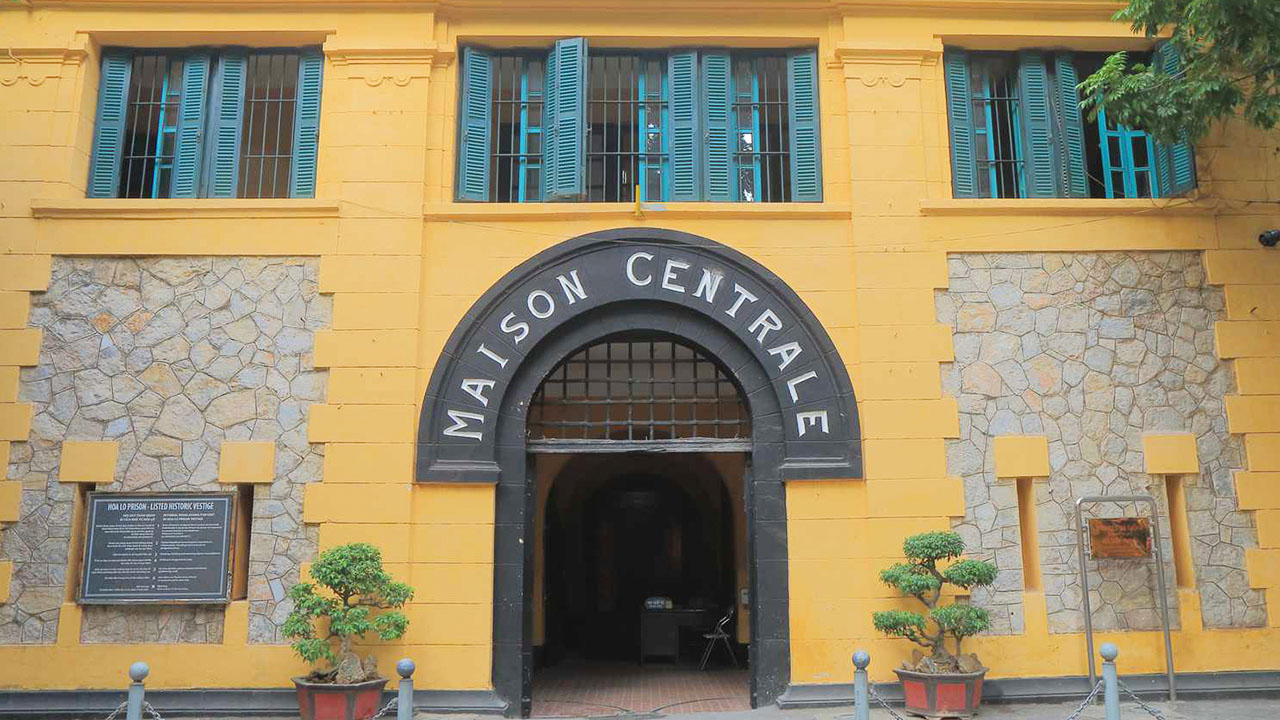
The chilling echoes of its dark corridors and the stories of those who endured its harsh conditions encapsulate a narrative of struggle and endurance, painting a vivid picture of the country’s indomitable spirit. Through compelling exhibits and testimonies, the Hoa Lo Prison Museum offers an introspective look into the grim realities of imprisonment, juxtaposed with tales of perseverance against insurmountable odds. It’s a journey into the heart of Vietnam’s past, illustrating the brutalities of colonial rule and war while emphasizing the courage and resilience of those who fought against oppression.
Historical context of Hoa Lo Prison
Hoa Lo Prison’s history is steeped in the broader narrative of Vietnam’s struggles for independence and sovereignty. Originally built between 1896 and 1901, the prison served as a stark symbol of French colonial oppression, designed to house those who dared to oppose foreign rule. As a physical manifestation of repressive power, it evolved alongside Vietnam’s political landscape, transitioning into a pivotal site during the Vietnam War for holding and controlling American POWs.
Today, it stands not only as a relic of colonial and wartime hardship but also as a powerful reflection of Vietnam’s enduring spirit and the continuous fight for national and political identity amidst external pressures. The museum encapsulates these transformative periods with a focus on the brutal conditions and resilience of its prisoners.
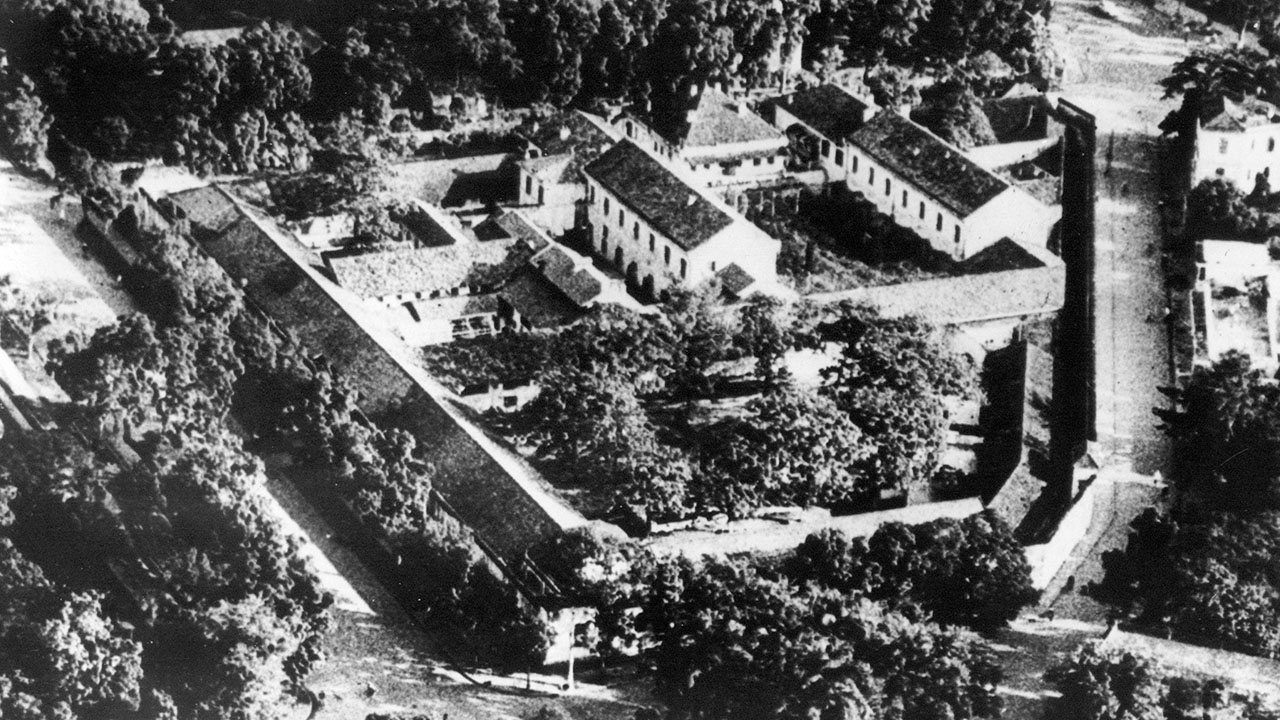
Origins and construction of Hoa Lo Prison
The origins and construction of Hoa Lo Prison reflect a complex period in history characterized by colonial rule and indigenous resistance. Initially erected between 1896 and 1901 by the French colonial government, its architecture was designed to project a sense of overpowering dominance. Situated in the heart of Hanoi, the prison stands where a pottery village once thrived a transformation from creation to captivity. The construction involved thick stone walls, topped with layers of barbed wire, purpose-built to deter escape and reinforce its intimidating presence. As noted, the name “Hoa Lo” translates to “fiery furnace” or “Hell’s hole,” metaphorically capturing the grim conditions the prisoners were subjected to.
The detailed design of Hoa Lo Prison manifested the French approach to colonial control, emphasizing the suppression of Vietnamese resistance. The four-meter-high walls, studded with glass shards, underlined the oppressive atmosphere intended to crush any spirit of defiance. Inside, facilities included watchtowers and cells structured to maximize surveillance and control. This encapsulates the French determination to maintain authority over Vietnamese political dissenters, turning a site previously known for community and craftsmanship into a symbol of fear and dominance. The prison’s objectives are eerily institutionalized within its very design a physical and symbolic attempt to enforce hierarchy and subjugation.

From practicality to a sense of dread, the interiors were meticulously laid out to instill despair a psychological warfare waged through architecture. Yet these same walls became a grounds for solidarity and resistance, as prisoners found unique ways to subvert their plight through unity and morale-building activities. The journey from a vibrant pottery market to a dismal chamber of confinement serves as a stark allegory for Vietnam’s experience under colonial rule a testament to the transformative and oppressive ambitions at play.
Table 1: Design Features of Hoa Lo Prison
| Feature | Description |
|---|---|
| Walls | Four-meter-high with barbed wire |
| Watchtowers | Positioned for maximum surveillance |
| Interior Cells | Cramped, poorly ventilated |
| Construction Site | Formerly a pottery village |
The details etched into its construction speak volumes about the socio-political tensions that framed its creation. The prison today encapsulates these historical contexts with a museum dedicated to presenting these narratives through various exhibits and interpretations.
Role of French colonialism in Hoa Lo Prison
The Role of French colonialism in Hoa Lo Prison is profound, as it established the institution as an emblem of repression and conflict. French authorities meticulously designed the prison not just as a detention facility but as a mechanism to crush Vietnamese resistance, a stark representation of their oppressive rule. The prison walls, towering and severe, were a formidable declaration of control, essentially a physical manifestation of psychological warfare. In an era defined by exploitation and subjugation, Hoa Lo became the primary holding ground for Vietnamese nationalists daring to challenge colonial authority.
Within the confines of this grim edifice, political dissidents were subject to severe punishments and inhumane living conditions indicative of colonial arrogance and brutality. The notorious guillotine, prominently displayed in the prison courtyard, served as a chilling tool of execution, reinforcing French dominance. This theatrical display of power aimed to incite fear among the imprisoned and discourage insurgent activities. Yet, despite these brutal measures, prisoners exhibited remarkable resilience. The environment intended to oppress and suffocate instead became a crucible for revolutionary ideas and solidarity.

A unique aspect of this oppressive environment was the subtle transformation of prison cells into mini-laboratories of resistance. Prisoners, stripped of freedom and dignity, turned to education and secret communication as their weapons of choice. The clandestine discussions, language exchanges, and revolutionary classes within these walls became crucial in nurturing a spirit of resistance that transcended the physical barriers imposed by colonial rule. Such activities set the stage for post-colonial narratives celebrating resilience against foreign domination.
List: Key Features of French Colonial Influence at Hoa Lo
- Systematic use of physical and psychological oppression.
- Execution methods, such as the guillotine, symbolizing colonial authority.
- Facilities designed for surveillance and control, limiting freedom and inciting fear.
Reflecting upon these elements, one cannot ignore the broader implications of how colonial powers endeavored to institutionalize their dominance through architecture. The narrative of Hoa Lo seeped into the nation’s consciousness, with every stone and every shadow whispering tales of defiance and survival. The establishment of such a prison revealed the explicit power dynamics at play, where architectural might was utilized not merely to confine bodies but to constrain hopes and aspirations. Yet, the indomitable spirit of the Vietnamese negated these efforts, transforming a symbol of oppression into one of unwavering resistance and resilience.
Evolution of the prison through different eras
The Evolution of Hoa Lo Prison through different eras serves as a testament to Vietnam’s shifting historical landscape, narrating tales from its colonial inception through revolutionary fervor to its infamous wartime role. Constructed initially by French colonialists, the prison’s primary purpose was clear: a site for the suppression of Vietnamese nationalism. However, its role morphed over the decades, reflecting the changing political climate of the country and the broader global context.
During its early years, the prison was emblematic of French authoritative strategies, cold and pragmatic in design, meant to silence anti-colonial sentiments. Yet, this oppressive environment inadvertently kindled the flames of resistance. As cells became more crowded, they also became hubs of ideological exchange, incubating revolutionary thought and unity among prisoners. This unexpected resistance underscored the futility of oppressive control and hinted at the nascent emergence of a post-colonial consciousness.
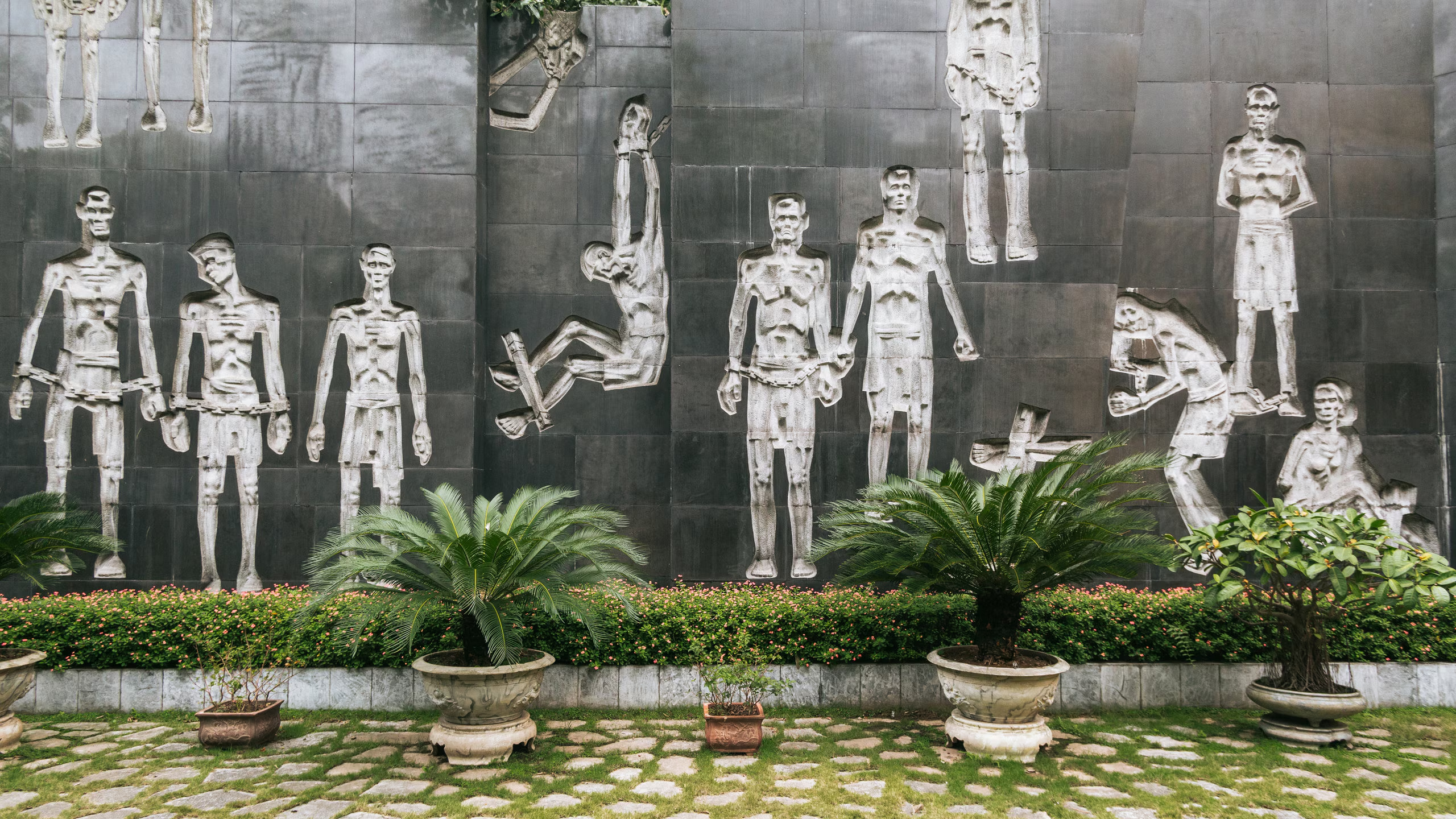
In the post-colonial period, Vietnam’s partition and subsequent reunification led to dramatic shifts within Hoa Lo’s function. During the Vietnam War, the prison gained prominence as the Hanoi Hilton, notorious for housing American POWs. This era is characterized by contrasting narratives Vietnam’s portrayal of maintaining humane conditions juxtaposes sharply with American accounts of torture and severe treatment. The dichotomy between these narratives often serves as the core of the museum’s current exhibits, capturing the complexity and contention in historical interpretations.
Table 2: Timeline of Hoa Lo Prison
| Era | Key Events/Features |
|---|---|
| French Colonial | Political prisoner incarceration, anti-colonial struggles |
| Post-Colonial | Symbol of resistance and revolutionary education |
| Vietnam War | Infamous as the Hanoi Hilton, housing American POWs |
Each era added layers to Hoa Lo’s historical narrative, deepening its symbolic weight in Vietnamese consciousness. The transition from a colonial prison to a site embedded in wartime controversy highlights the fluidity of historical sites in capturing ever-evolving political and social realities. As a museum, Hoa Lo now juxtaposes these contrasting eras, inviting visitors to explore its complex narrative and reflect on the broader implications of such transformations in shaping historical memory.
As the prison transformed through different regimes, it also evolved into a canvas where diverse narratives of resilience, suffering, and endurance painted a detailed portrait of Vietnam’s journey. From holding Vietnamese revolutionaries to American prisoners, Hoa Lo became an axis of historical crossroads, elucidating the travails and triumphs of an unyielding spirit etched into its stone walls. This evolution, both literal and symbolic, remains central to Vietnam’s national identity today.
Conditions inside Hoa Lo Prison
The Conditions inside Hoa Lo Prison were a harrowing mix of oppression, designed to break the spirit of those housed within its walls. From its early days under French colonial rule to its infamous use during the Vietnam War, the prison exemplified extreme conditions of confinement and control. The overarching narrative of limited space, unsanitary environments, and oppressive treatment became synonymous with the prison’s legacy. Yet, in these dark episodes lay stories of resilience and unity, as prisoners found solace and strength in solidarity amidst adversity.
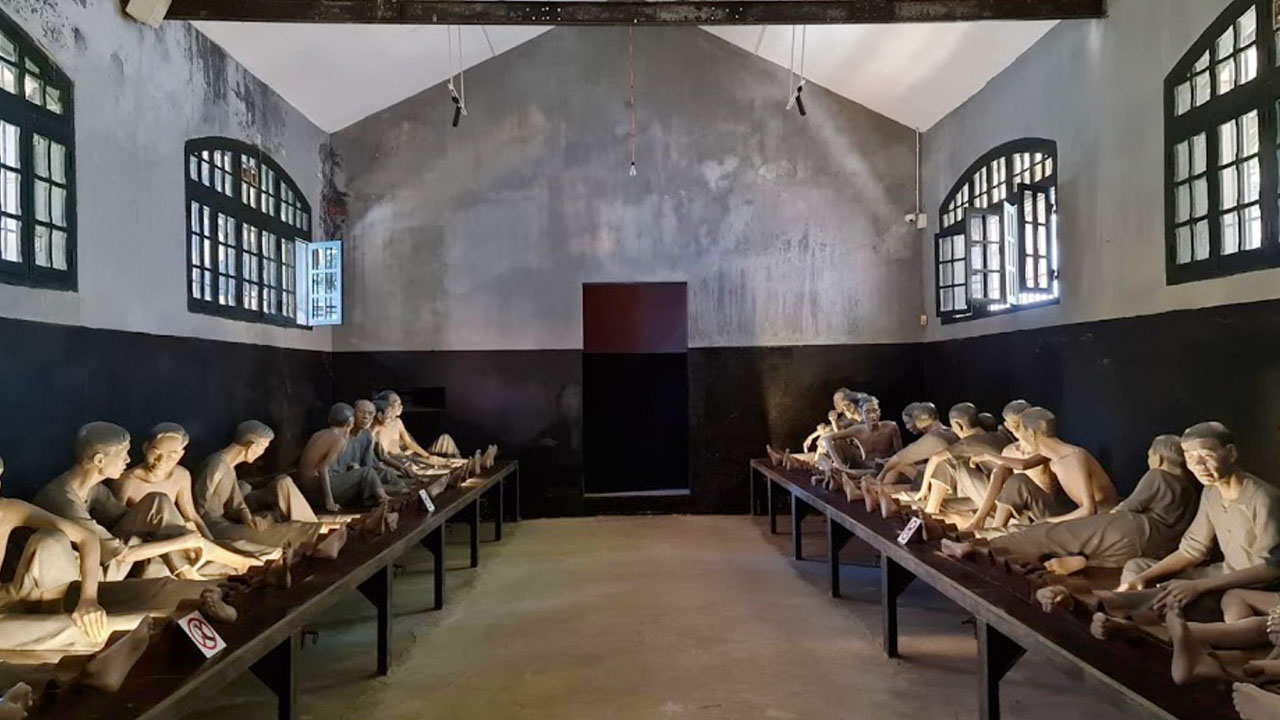
Living conditions for Vietnamese political prisoners
The Living conditions for Vietnamese political prisoners within Hoa Lo Prison during its early years were nothing short of dire. Designed to incapacitate and intimidate, the environment was intentionally oppressive, illustrating the harsh realities of life under colonial rule. Initially, the prison was built to hold merely 450 inmates, yet overcrowding soon became rampant as it housed more than 2,000 prisoners, particularly during heightened periods of political unrest. The tight, dark cells were a testament to the disregard for human dignity and the austere assertion of colonial power.
Placed in such inhospitable surroundings, prisoners faced the constant challenge of living in poorly ventilated conditions that resembled subterranean dungeons rather than rooms meant for human habitation. With scant access to natural light, the cells became emblems of isolation and alienation, exacerbating the physical and psychological torment endured by the inmates. Basic amenities were deliberately withheld, with prisoners subsisting on scant, unappetizing portions of food, often spoiled, which led to widespread malnutrition an embodiment of the colonial regime’s disdain for its captives.
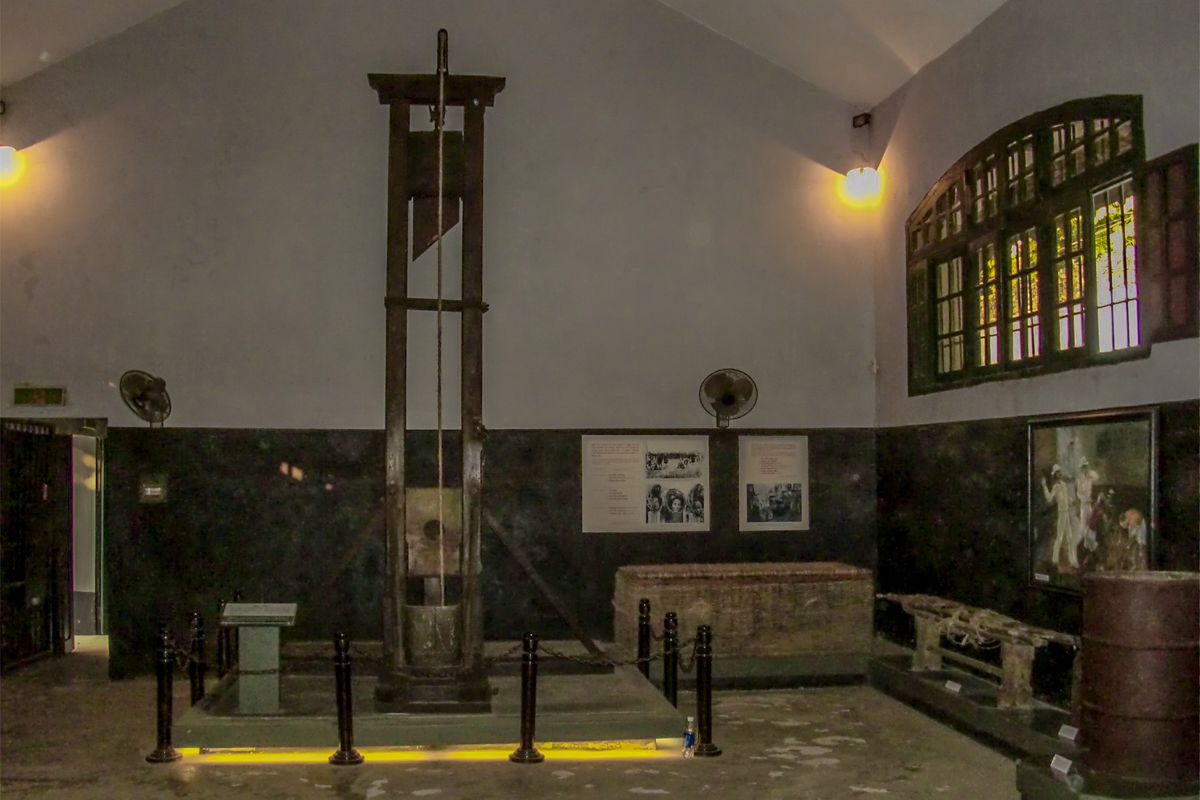
To further illustrate their plight, one can compare the prison’s provisions to those suited for livestock rather than humans. Sanitary conditions were, if possible, even worse. Open-air toilets, rarely cleaned and often overflowing, contributed to an atmosphere of decay and despair. Such neglect formed part of a broader narrative of dehumanization, stripping inmates of their fundamental rights and reducing them to mere ‘subjects’ bodies to be controlled and broken.
List: Key Aspects of Prison Life
- Severe overcrowding: Built for 450 but housed over 2,000 inmates.
- Poor ventilation and limited natural light: Cells akin to dungeons.
- Inadequate food and sanitation: Leading to malnutrition and disease.
Despite these oppressive conditions, the human spirit persisted. Prisoners turned to each other for support, engaging in clandestine educational projects and ideologically driven discussions that became acts of resistance. Such activities fostered a community ethos within the prison, exemplifying the inherent capacity for perseverance amid hardship. Through unity and covert resistance, these men and women not only survived but managed to ignite the flame of hope within an otherwise ‘hellish’ existence.
Torture and punishment methods used in the prison
The Torture and punishment methods used in Hoa Lo Prison symbolize the brutal efforts to dismantle the spirits of those confined within its walls. Throughout both the French colonial and Vietnam War eras, techniques employed within the prison were unmistakably vicious, reflecting the oppressive intent of the authorities in power. These heinous practices aimed to physically and psychologically disarm prisoners, leaving scars not only on their bodies but also on their spirits.
During the French colonial period, punishment methods involved instruments such as the guillotine, which served as a grim reminder of the authority’s supremacy. This stark contraption was more than a tool for execution; it was a symbol of fear, a public declaration of colonial might. Additionally, devices like shackles and solitary confinements, referred to as “cachot,” were employed to systematically dehumanize inmates, reducing them to mere subjects of control.
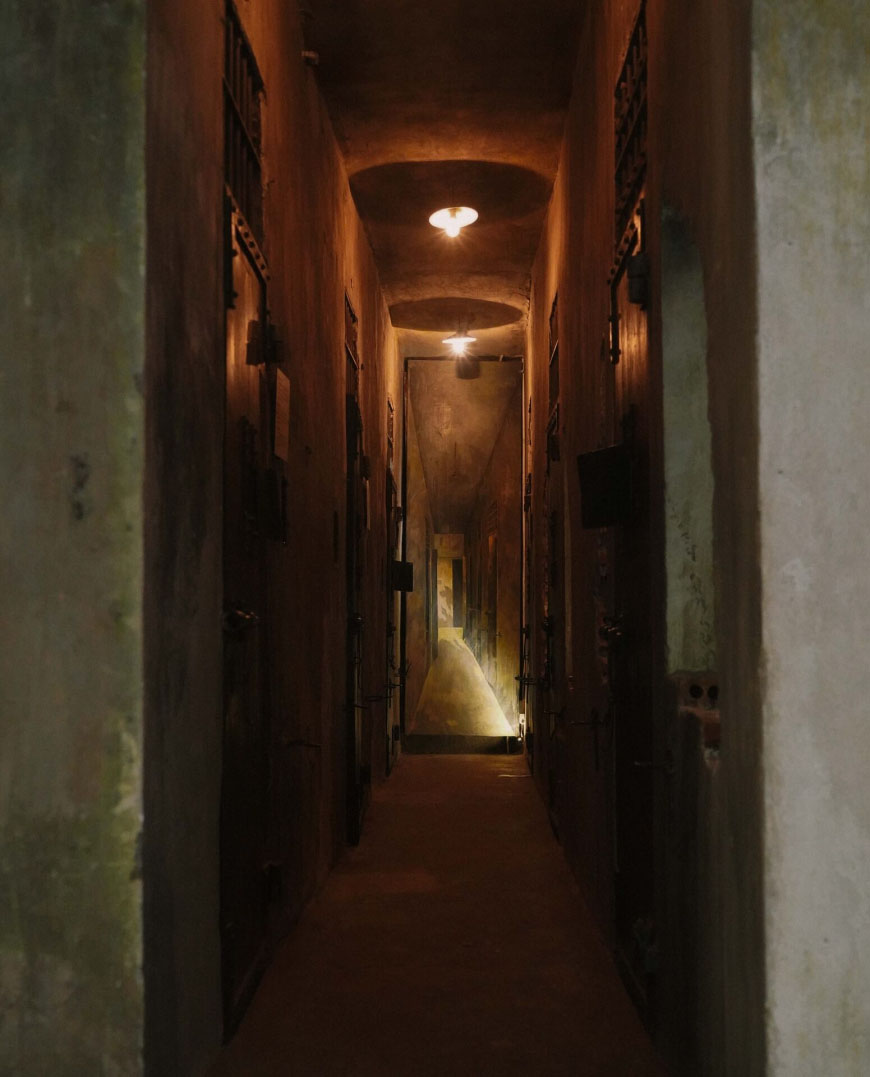
As years passed and the political climate shifted, the Vietnam War era transformed the prison’s grim reputation further. American POWs faced methods whose cruelty has been well-documented, including sleep deprivation, harsh interrogations, and physical beatings. One infamous tactic was the Vietnamese rope trick, in which a prisoner’s hands were bound behind their back, twisted to the extent of causing dislocations. Such torture intended to sap resistance and extract information or confessions and was indicative of the lengths to which oppressors would go to maintain superiority over their captives.
Table: Comparison of Torture Techniques
| Period | Methods Employed |
|---|---|
| French Colonial | Guillotine, shackles, solitary confinement |
| Vietnam War | Sleep deprivation, physical beatings, rope trick |
Despite the bleak circumstances, prisoners demonstrated an unyielding fortitude. They navigated their confinement with courage, using devised communication systems and engaging in acts of subtle rebellion, such as creating covert signaling codes to share information and maintain morale among fellow captives. Such strategies reflect the resilient nature of those imprisoned, portraying a narrative where spirit and solidarity outlast physical suffering.
In analyzing these cruel methodologies, the prison emerges as a locus of both tremendous suffering and remarkable resilience, continuously testing the limits of human endurance and highlighting the triumph of hope and perseverance against adversity.
Experiences of american pows at Hoa Lo
The Experiences of American POWs at Hoa Lo, often referred to with a grim sense of irony as the “Hanoi Hilton,” represent a contentious chapter in the prison’s lengthy history. American airmen confined here found themselves ensnared in a web of harsh and unforgiving conditions during the Vietnam War. The treatment they endured paints a contrasting picture to the contemporary portrayal of their captivity as relatively humane. This discord has fueled debate over the years, as various narratives seek to either rationalize or condemn the events that transpired within those formidable walls.
The semantic dance between the absurdity of the moniker “Hanoi Hilton” and the stark reality of inhumane conditions underscores the precarious existence of these prisoners. Subjected to prolonged periods of confinement and interrogation, they faced a gamut of mistreatments designed to deplete both physical strength and mental resilience. These included the infamous Vietnamese rope trick, which involved a painful twisting of limbs to extract confessions or compliance.
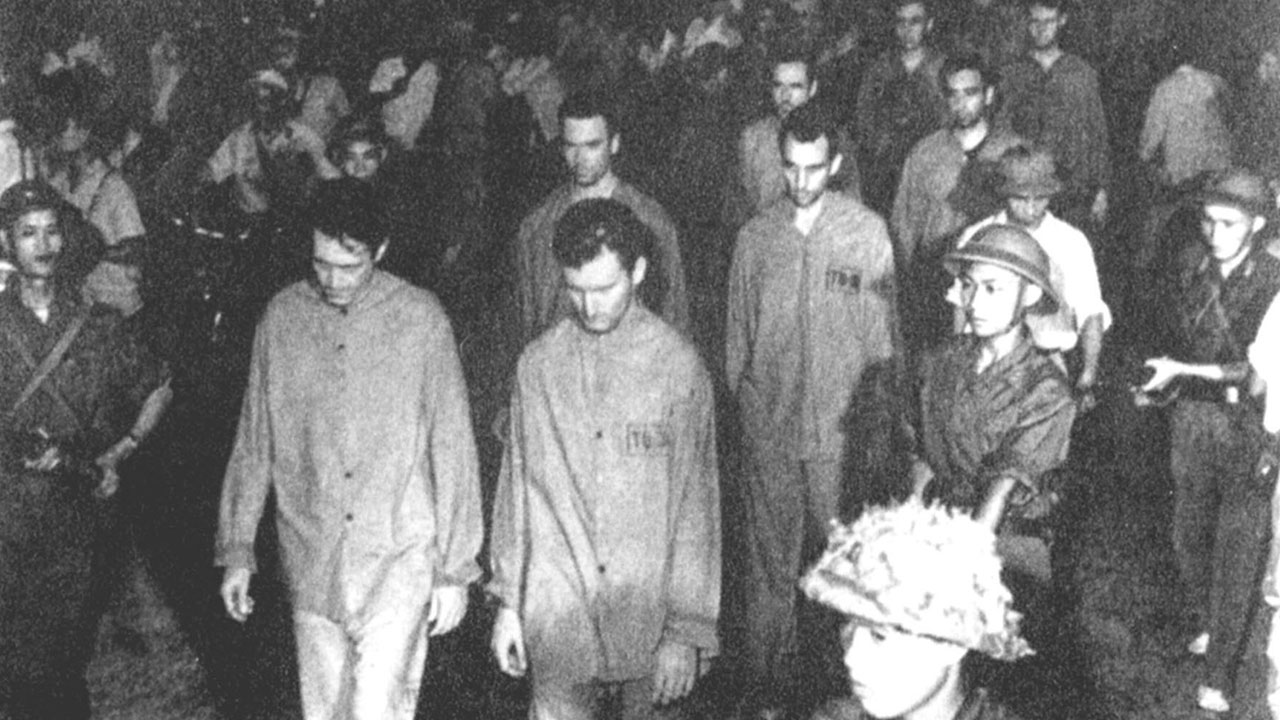
In addition to physical maltreatment, the emotional duress was exacerbated by existential uncertainties. POWs were frequently submerged in a state of ambiguous warfare, isolated and systematically cut off from potential sources of solace or hope. Reminiscent of caged birds, their spirits were challenged daily by both their captors and the oppressive atmosphere of confinement.
List of Challenges Faced:
- Prolonged solitary confinement and isolation
- Severe physical punishment
- Heightened psychological stress
- Limited access to information from outside war efforts
Yet, amid these adversities, prisoners developed ingenious methods of endurance. An example is the tap code, a communication system that allowed them to relay messages and maintain morale. Through these coded exchanges, unity and purpose flourished, creating a network of support and solidarity that defied the debilitating conditions imposed by their captors. This ingenuity affirms the resilience of their spirit and illustrates their ability to find light in the depths of despair.
The portrayal of these experiences encapsulates an intricate dichotomy at the heart of historical memory, where resilience meets repression and the portrayal of perceived decency clashes with lived realities. It reveals the complex layers of narrative that continue to shape the discourse around Hoa Lo’s legacy and its ongoing journey as a museum of remembrance and reflection.
Exhibits and interpretations at the museum
The Exhibits and interpretations at the Hoa Lo Prison Museum offer visitors a comprehensive insight into the prison’s grisly past, shedding light on its many phases and functions. The displays echo the harsh conditions faced by prisoners, while drawing attention to their acts of defiance and resilience against oppressive regimes. Through visual narratives and symbolic artifacts, the museum aims to connect visitors with the intricate layers of history contained within its walls, encouraging deeper understanding of Vietnam’s struggles for sovereignty and identity.

Focus on French colonial period exhibits
The museum’s Focus on French colonial period exhibits immerses visitors in a world of oppressive control and resistance. Dedicated sections of the museum illustrate the draconian conditions that political prisoners endured during this era. Static displays provide a somber backdrop against the vivid narrations of survival within the confines of Hoa Lo Prison. Photographs and documents are interwoven with artifacts, creating an evocative tableau of historical recollection.
Among the poignant objects on display is the notorious guillotine, a potent symbol of colonial repression. Its presence looms large within the exhibit, visually casting a shadow over the broader discourse of justice and subjugation. Remarkably well-preserved, the guillotine serves as a visceral reminder of the harsh methods employed to suppress resistors who dared question the authority of their foreign rulers.
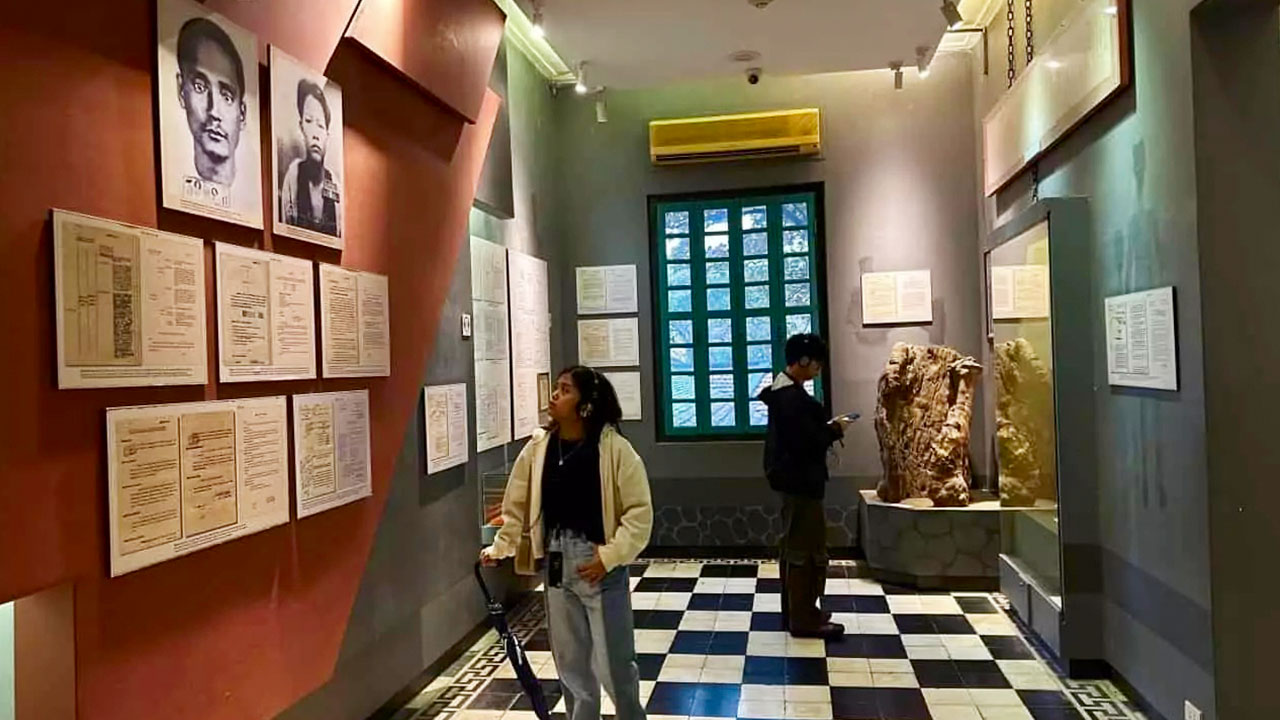
The exhibit also highlights the living conditions of prisoners, who were often crammed into overcrowded cells with minimal amenities. Historical documents describe the hardships they faced, their tactical subversion of colonial strategies, and the secret communication systems they developed to plot resistance. In painting this narrative, the museum positions these prisoners as unsung heroes, enduring hellish conditions by sustaining their resilience and hope for freedom.
Key Elements of Colonial Period Exhibits:
- Documented testimonies and letters of prisoners
- Displays of prisoner life: attire, tools, and daily routines
- Artifacts of punishment, such as the guillotine
In emphasizing the era’s tension, the museum captures a stark duality where oppression met defiance, and the ceaseless struggle for liberation fueled the fires of resistance. Through artifacts and stories that hint at both despair and courage, visitors can perceive the multi-leveled historical narratives of sacrifice and resilience woven into the pages of Vietnam’s past.
The exhibits’ intricate design and compelling narrative composition allow visitors to traverse through time, connecting with the historical motifs that defined an era of colonial conflict. As the narrative unfolds, it becomes a testament to the indefatigable quest for identity and sovereignty in Vietnam’s collective memory an immersive experience that transcends the physical space and the passage of time.
Representation of Vietnamese resistance leaders
The Representation of Vietnamese resistance leaders in the Hoa Lo Museum portrays a compelling narrative of bravery, solidarity, and unwavering commitment to independence. Through carefully curated exhibits, the museum highlights pivotal figures who, despite being imprisoned, continued to inspire revolutionary zeal and defiance. These leaders’ narratives are woven throughout the displays, emphasizing their pivotal roles in Vietnam’s struggle for freedom and their enduring influence on national identity.
Artifacts such as personal letters, engravings, and simple everyday objects provide glimpses into the lives of these leaders behind bars. These remnants are more than mere historical relics; they are testaments to the indomitable spirit that pervaded the prison walls. The carefully preserved exhibits imbue the museum space with a solemn yet uplifting aura, a tribute to those whose actions reverberated beyond their immediate context to inspire future generations.
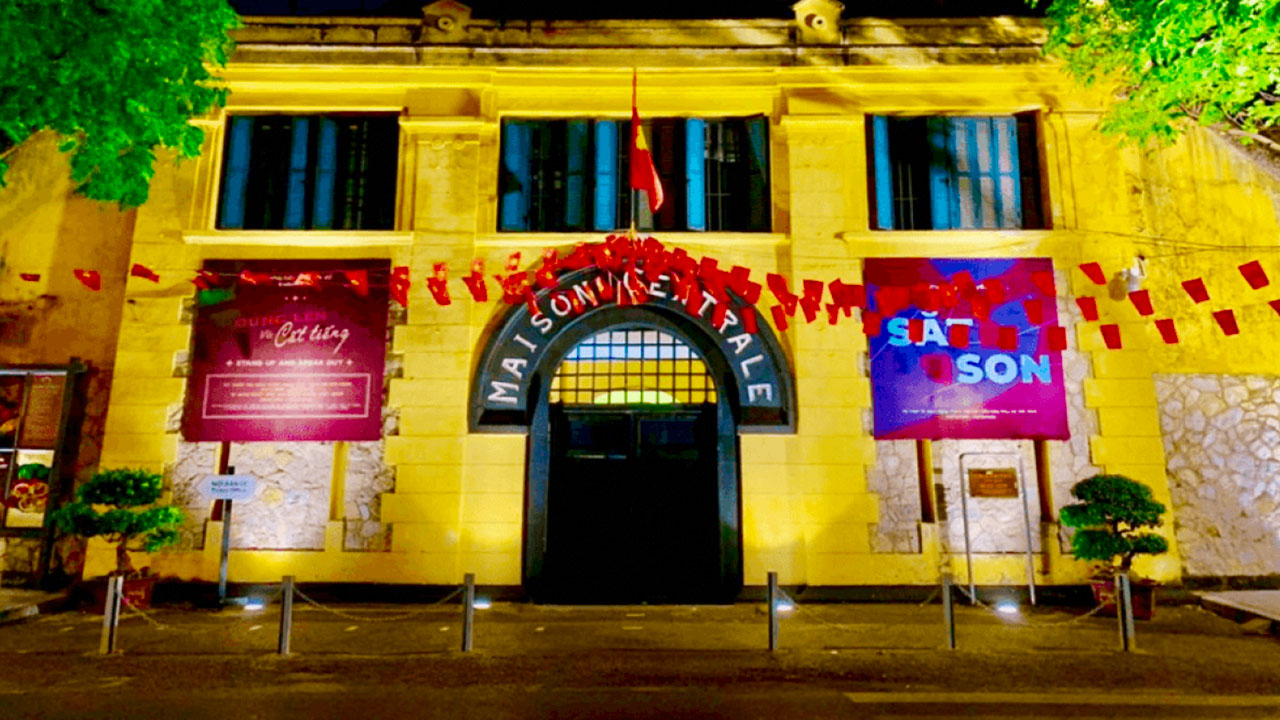
One of the more poignant exhibits is dedicated to female leaders, showcasing their tenacity and resourcefulness in the face of overwhelming adversity. Stories of resilience, brilliantly captured through evocative photographs and detailed biographies, demonstrate how these women played a critical role in nurturing the aspirations of the Vietnamese people. This aspect of the museum evokes the strength of silent defiance and its critical role in shaping resistance movements.
Exhibit Highlights:
- Personal belongings and letters of resistance leaders
- Narrative Multimedia Presentations: Biographies and photographs
- Sections dedicated to female contributions to the independence movement
Through these exhibits, the museum curates a narrative that celebrates courage and dedication. It positions visitors to reflect upon the contributions of these figures who transcended the bleak confines of Hoa Lo Prison to etch their names in the annals of history. Understanding their experiences and sacrifices offers profound insight into the complexities of resistance movements, both within Vietnam and in broader global struggles against oppressive regimes.
The tales encapsulated in these exhibits resonate with visitors, drawing parallels between past and present, and motivating reflection on the enduring spirit of resistance and unity that continues to define Vietnam’s identity on the world stage. By honoring these figureheads and their shared legacies, the museum reinforces the sense of national pride and resilience that has propelled Vietnam through tumultuous times.
Portrayal of american pow experiences
The Portrayal of American POW experiences in Hoa Lo Museum provides a critical counter-narrative within a predominantly Vietnamese-centric historical interpretation. Exhibits dedicated to American prisoners of war delve into their individual and collective experiences, presenting a nuanced reflection of their time at the infamous “Hanoi Hilton.” Through detailed accounts and carefully curated artifacts, the museum sheds light on their trials, resilience, and the broader implications of their captivity.
Central to this exhibit are personal accounts and letters smuggled out by POWs, which serve as poignant windows into their daily struggles. These intimate reflections detail not only the physical challenges but also the psychological resilience of the captives. Photos of the men, often shackled and visibly strained, juxtapose heroic imagery of their survival efforts, providing a balanced view of war that transcends simplistic binaries of victim and perpetrator.
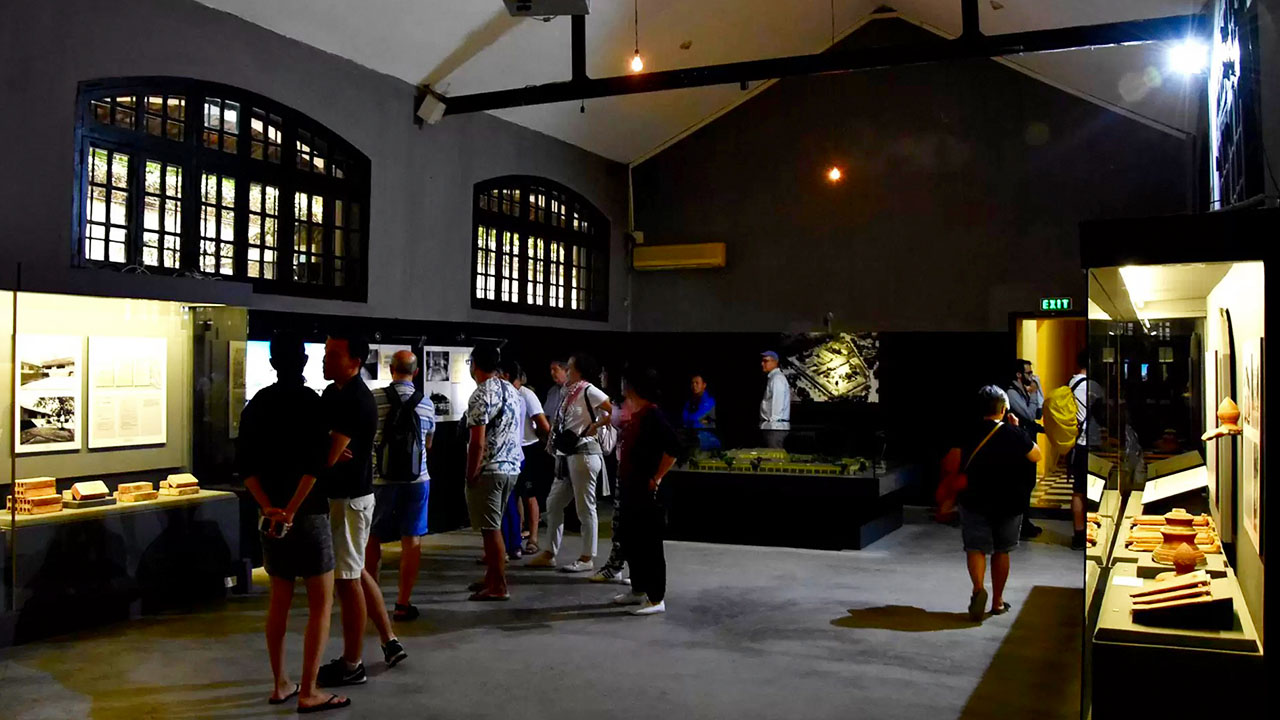
Items such as makeshift tools, prisoner uniforms, and personal artifacts are displayed alongside graphic narratives of interrogation methods and survival strategies. The museum highlights the ingenuity demonstrated by these men as vital survival techniques were developed under grim circumstances. Despite the omnipresent threat of torture, POWs formed a clandestine network that utilized codes and covert communication to build solidarity an enduring testament to human resilience in dire conditions.
Notable Elements of POW Exhibition:
- Personal letters/smuggled communications
- Photographs illustrating daily lives and survival tactics
- Displays on innovative strategies: communication codes
Through this portrayal, Hoa Lo Museum carefully balances contrasting perspectives by presenting an acknowledgment of their wartime experiences while also contextualizing them within Vietnam’s broader historical struggle. By framing the narratives within the complex web of war-time realities, the exhibits transcend polarized discourse and appeal to a shared sense of understanding and acknowledgment of past injustices.
The duality of this narrative invites reflection on the contentious interpretation of history and underscores the complexity of memory in post-conflict society. It encourages introspection on moral paradigms and challenges visitors to contemplate the wider ramifications of war on individuals and nations alike, ultimately contributing to reconciliation and the seeking of common human values in shared historical experiences.
Comparative analysis of perspectives
The Comparative Analysis of Perspectives within the exhibits showcases the multifaceted narratives surrounding Hoa Lo Prison juxtaposing the experiences of Vietnamese political prisoners against American POWs. This interplay of historical perspectives allows for deeper engagement with compelling, contrasting narratives. Visitors witness a convergence of divergent stories, each representing a key element of the prison’s dark past. They are nudged towards reflection on the continuity of human resilience amidst the complexities and variances in wartime narratives.
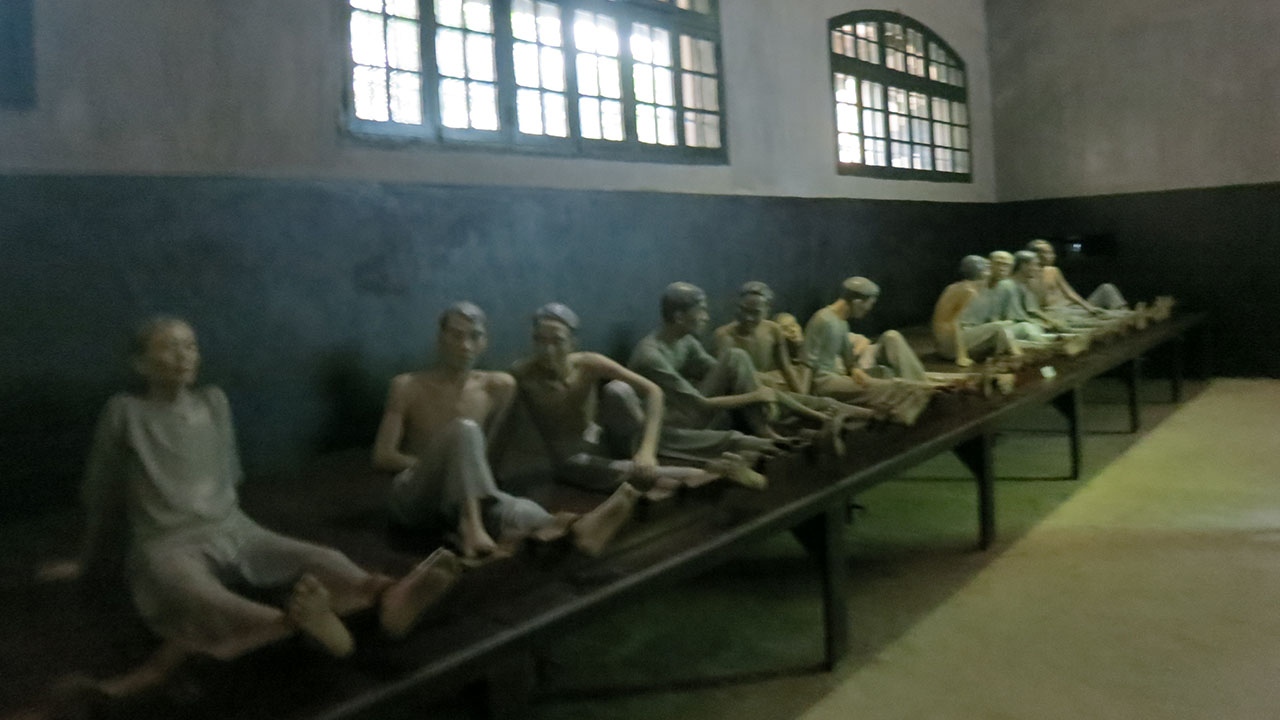
Vietnamese vs. American historical narratives
The Vietnamese vs. American historical narratives represent a fascinating juxtaposition of perspective and experience, highlighting the intricate and often conflicting interpretations of historical events as showcased at the Hoa Lo Prison Museum. This narrative dissonance is most apparent when comparing the accounts of Vietnamese resistance fighters and American POWs who shared the same physical space under vastly different circumstances.
From the Vietnamese perspective, the prison is a somber monument to nationalist struggle a space where colonial and later wartime oppressors sought to break the spirit of the Vietnamese people. It’s a narrative forged from tales of suffering and resilience, where inmates, despite extreme hardships, fueled the flames of resistance and knowledge. Exhibits reflect this through personal stories, resistance memorabilia, and ideological education that occurred within the prison confines, affirming the indomitable will of imprisoned patriots.

Conversely, the American perspective often highlights the grim reality of POW experiences: harsh treatment, severe punishments, and psychological degradation inflicted during the Vietnam War. It is a narrative underlined by dramatic survival stories, coded communications, and resilience against attempts at forced propaganda. Photographs, personal accounts, and artifacts related to this era emphasize their struggle, forming an integral part of the museum’s diverse narrative web.
Comparison Table: Key Narrative Distinctions
| Aspect | Vietnamese Narrative | American Narrative |
|---|---|---|
| Perspective Focus | Nationalist struggle and resilience | POW survival against harsh conditions |
| Exhibits Highlight | Resistance memorabilia, educational efforts | POW tools, communications, and survival tactics |
| Narrative Emotion | Collective unity and resistance | Individual endurance and resilience |
The presentation of these divergent narratives encourages visitors to reflect on the subjective and multifaceted nature of historical storytelling, urging recognition of multiple truths. Through this comparative analysis, the museum allows for an exploration of deeper themes of reconciliation, understanding, and the shared human capacity for resilience despite contrasting historical recollections.
By highlighting both sides, the museum tackles complex issues of historical memory, challenges static historical interpretations and invites dialogue among visitors of diverse backgrounds. The exhibits engage audiences in an ongoing conversation about past conflicts and their lingering impacts on contemporary cultural identity and collective memory.
Reception of the museum narratives by different audiences
The Reception of the museum narratives by different audiences at Hoa Lo is as varied as the stories themselves. The museum’s portrayal of the prison’s turbulent history elicits a spectrum of emotions and reactions based on individual backgrounds and cultural contexts. While Vietnamese visitors may view the museum as a tribute to national resilience, international tourists, particularly Americans, may experience a complex emotional response to the dual narratives of victim and oppressor.
For many Vietnamese, the museum serves as a narrative of national pride, exhibiting their country’s struggle for independence against formidable forces. The focus on Vietnamese resistance draws admiration and respect, reinforcing a collective historical identity centered around perseverance, heroism, and sacrifice. This binds the museum’s narratives into the broader national consciousness and collective memory.

In contrast, American visitors often approach the museum with a sense of reserved contemplation. The portrayal of American POW experiences opens a poignant space where narratives of victimhood intersect with the realities of war. Reactions may range from empathy and reflection on the travails endured by American servicemen to critical consideration of Vietnam’s representation of POW conditions. These varied perceptions underscore the complexity inherent in understanding multifaceted war histories.
List of Audience Reactions:
- Vietnamese: National pride, admiration for resistance
- Americans: Empathy, contemplation, critical reflection
- Others: Interest in broader historical contexts, exploration of diverse narratives
The breadth of interpretation highlights the importance of nuanced storytelling, where recognition and inclusion of different perspectives allow for a complex, multifaceted narrative to emerge. It stimulates discourse on historical memory, its representation, and its impact on personal and collective identities across cultures.
Through this multifarious reception, Hoa Lo emerges as a significant site of dialogue and intercultural exchange. It transcends cultural divides by prompting visitors to consider their own historical understandings, question broader narratives, and engage with the ongoing journey of reconciliation and reflection that continues to shape Vietnam’s national identity.
Impact of historical memory on Vietnam’s national identity
The Impact of historical memory on Vietnam’s national identity is palpably illustrated within the confines of the Hoa Lo Prison Museum. As a repository of wartime narratives and colonial oppression, the museum catalyzes a unique dialogue on the nuances of historical narrative and identity formation. The interweaving of stories throughout its exhibits underscores how collective memory constructs a framework for national consciousness and reflects a broader cultural ethos of resilience and unity.
Central to this construction is the portrayal of Vietnam’s resistance against colonial and foreign forces. The museum elevates these narratives, creating a multifaceted portrayal of strength, endurance, and the relentless pursuit of sovereignty. This remembrance fosters a sense of pride and continuity within Vietnamese hearts, resonating deeply with a narrative of collective upheaval and shared success in the face of adversity. By safeguarding these memories, the museum shapes a national identity that acknowledges the past’s complexities and adversities while affirming a trajectory toward a brighter inherited future.
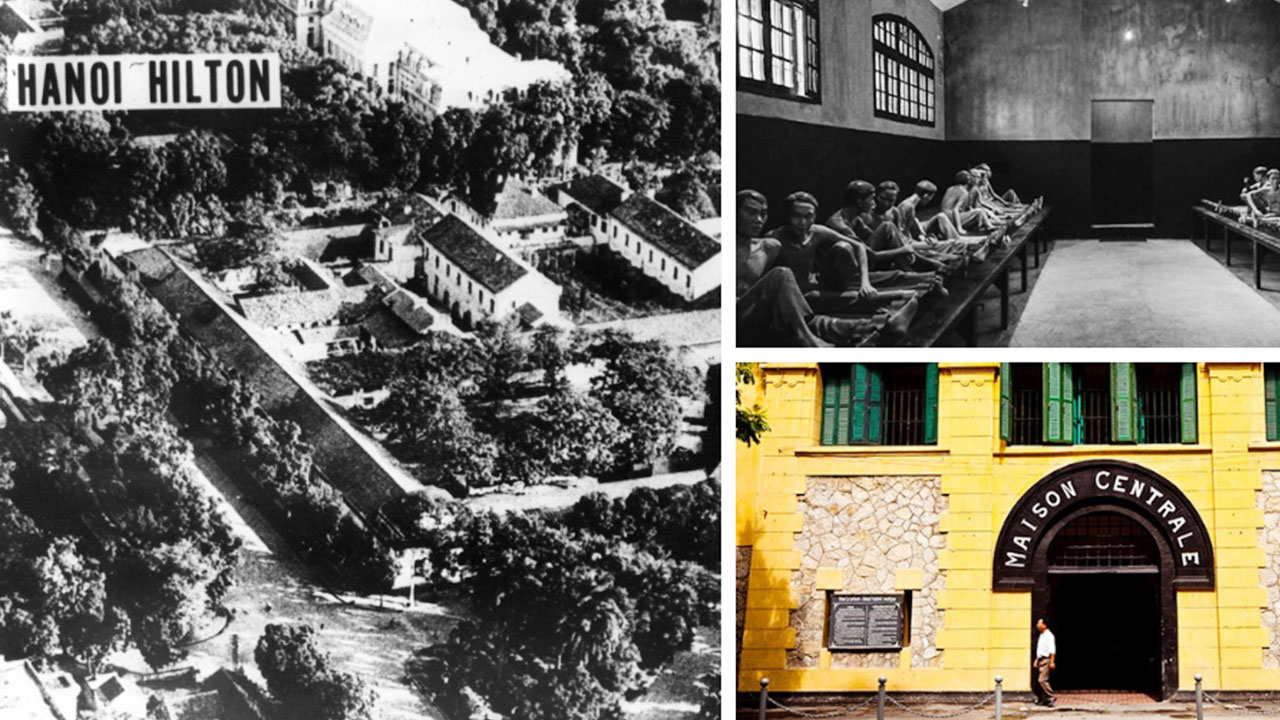
Simultaneously, this incorporation affects current discourse on reconciliation and identity, bridging historical fractures with a resolve for shared progress. The pain and struggle embedded in the memorabilia and narratives create a living connection with history, actively engaging younger Vietnamese generations in dialogue with their past, inspiring nascent national pride.
Elements Shaping National Identity:
- Celebration of resistance and perseverance
- Narratives focused on unity and resilience
- Historical memory as cultural ethos and pride
However, the portrayal of past conflicts involving American POWs offers an introspective view on reconciliatory memory-building. This involves acknowledging past injustice while fostering cultural bridges and mutual understanding between former adversaries. The inclusion of these chapters enriches Vietnam’s national identity, adding layers to the conversation of shared human struggle beyond political binaries.
Altogether, the impact of historical memory at Hoa Lo encompasses a profound introspection into the legacy of conflict. It shapes an evolving narrative that continually defines Vietnam’s national spirit, building an identity rooted in reconciliation, remembering, and sensing both triumph and trauma in the reflective world of historical resonance.
Visitor experience and practical information
Address: 1 Hoa Lo Ward, Tran Hung Dao, Hoan Kiem, Hanoi
The Visitor experience and practical information provided by the Hoa Lo Prison Museum ensure that each visit is both enlightening and emotionally resonant. Navigating the complex emotions and narratives presented at the museum involves setting the right tune between comprehension and reverence. Historical narratives, while diverse and contrasting, enable visitors to engage with the deeper nuances of the prison’s history within a well-structured experiential framework, guiding them through the multifaceted layers of Vietnam’s past and present.
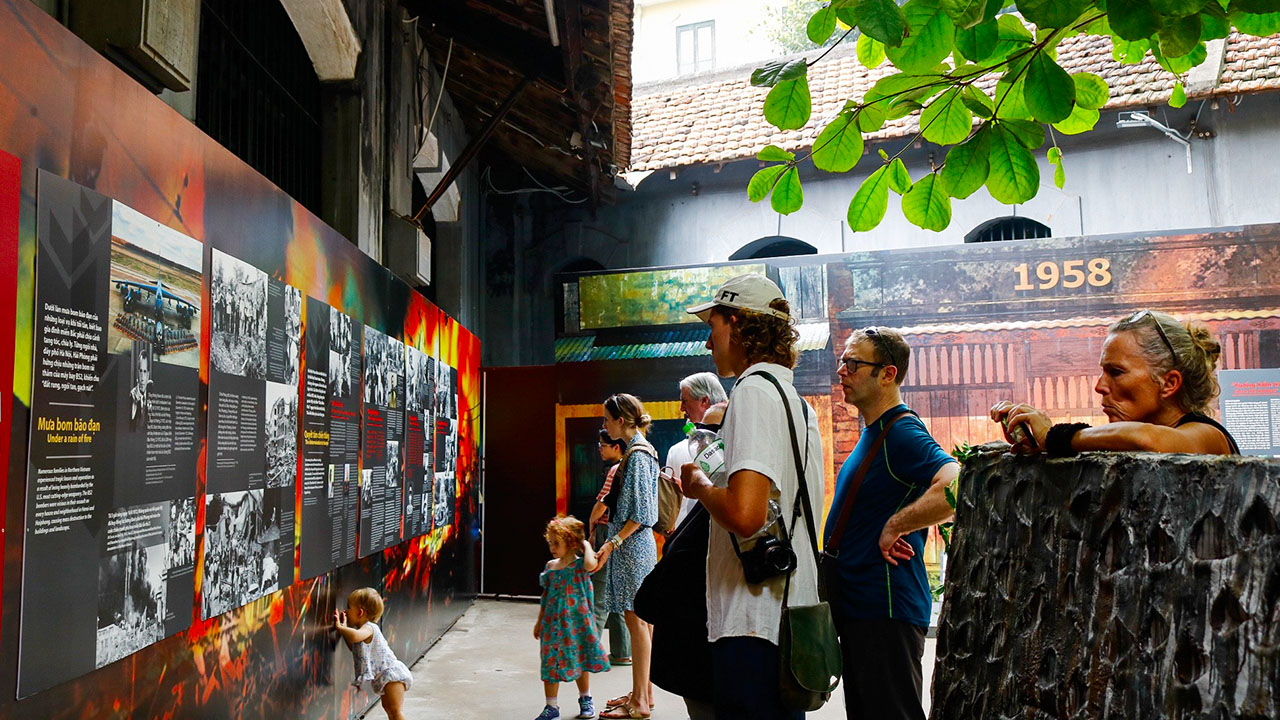
Key areas of the museum to explore
Exploring the Key areas of the museum reveals a tapestry of stories that weave the rich and often haunting layers of Hoa Lo’s history. Visitors are welcomed into spaces thoughtfully curated to evoke reflection, education, and empathy, creating a comprehensive journey through time. Each section provides insight into the nuanced narratives that define the past experiences and collective memory associated with this iconic site.
The exhibition begins by tracing the prison’s origins under French colonial rule. With its detailed reproductions of prisoner cells, exercise yards, and period memorabilia, visitors are instantly immersed in a world marked by repression and subjugation. Gritty yet artfully executed, these exhibits guide both local and international guests alike to engage with the artefactual remnants of oppression.
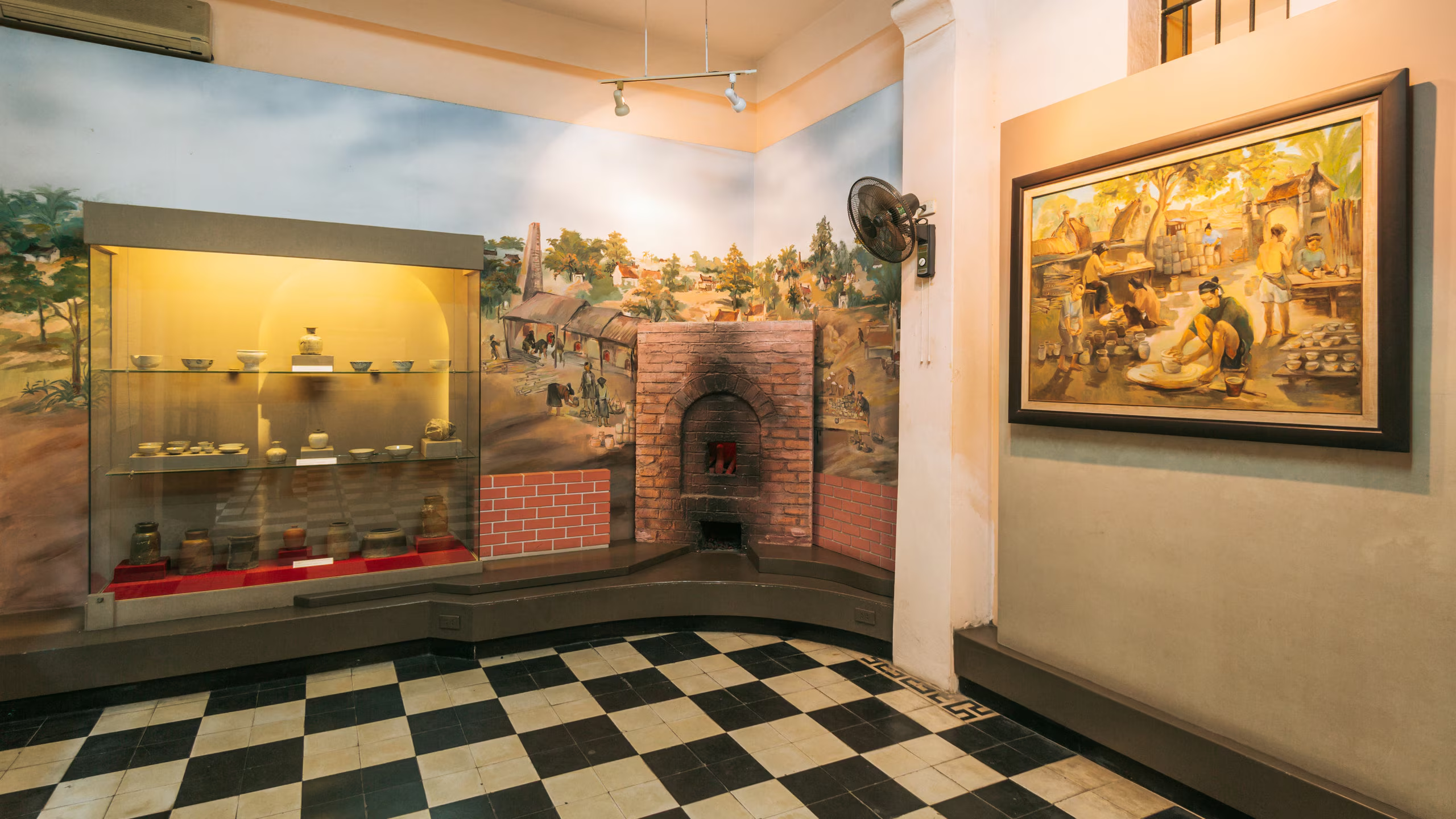
In contrast, the sections dedicated to American POWs during the Vietnam War deliver a different facet of the prison’s narrative. Artifacts, reconstructed cells, and personal accounts succinctly capture their ordeals, creating an emotional yet educational experience that invites reflection upon the complex layers of international conflict.
Notable Museum Areas:
- Colonial period displays: French architectural remnants, original documents
- Wartime exhibits: American POW journals, uniforms, and artifacts
- Memorial sections: Tribute to Vietnamese resistance leaders
Highlighted throughout is the Wings in the Night exhibit, which poignantly showcases stories of escape attempts by inmates through creative daring that defied overwhelming odds. This section synthesizes an overarching spirit of resilience and illustrates the constant undercurrent of hope maintained by those incarcerated within the stone corridors.
By navigating these key areas, visitors gain access to a robust and multifaceted understanding of lineages at the heart of Vietnam’s struggle, resistance, and reconciliation narratives. The museum does more than inform; it permeates the soul with a reflective awareness, challenging perceptions and enriching an understanding of Vietnam’s tumultuous history and enduring spirit.
Recommendations for visitors
Hoa Lo Prison: Top 10 Most Attractive Tourist Attractions in Hanoi
Embarking on a visit to the Hoa Lo Prison Museum is as much about forethought as it is about the experience itself. Given the solemn and impactful nature of the narratives explored within its halls, a thoughtful approach can enhance both appreciation and reflection. Here are some recommendations to ensure a fulfilling encounter with this historical landmark.
Firstly, allocate ample time to engage with the depth of the exhibits. To truly absorb the narratives presented, plan for at least a couple of hours touring the museum premises. This timeframe allows visitors to explore at leisure, lingering over sections that provoke thought or demand reflection. Keep in mind that the museum’s layered storytelling benefits from both an uninterrupted flow and moments of quiet contemplation.
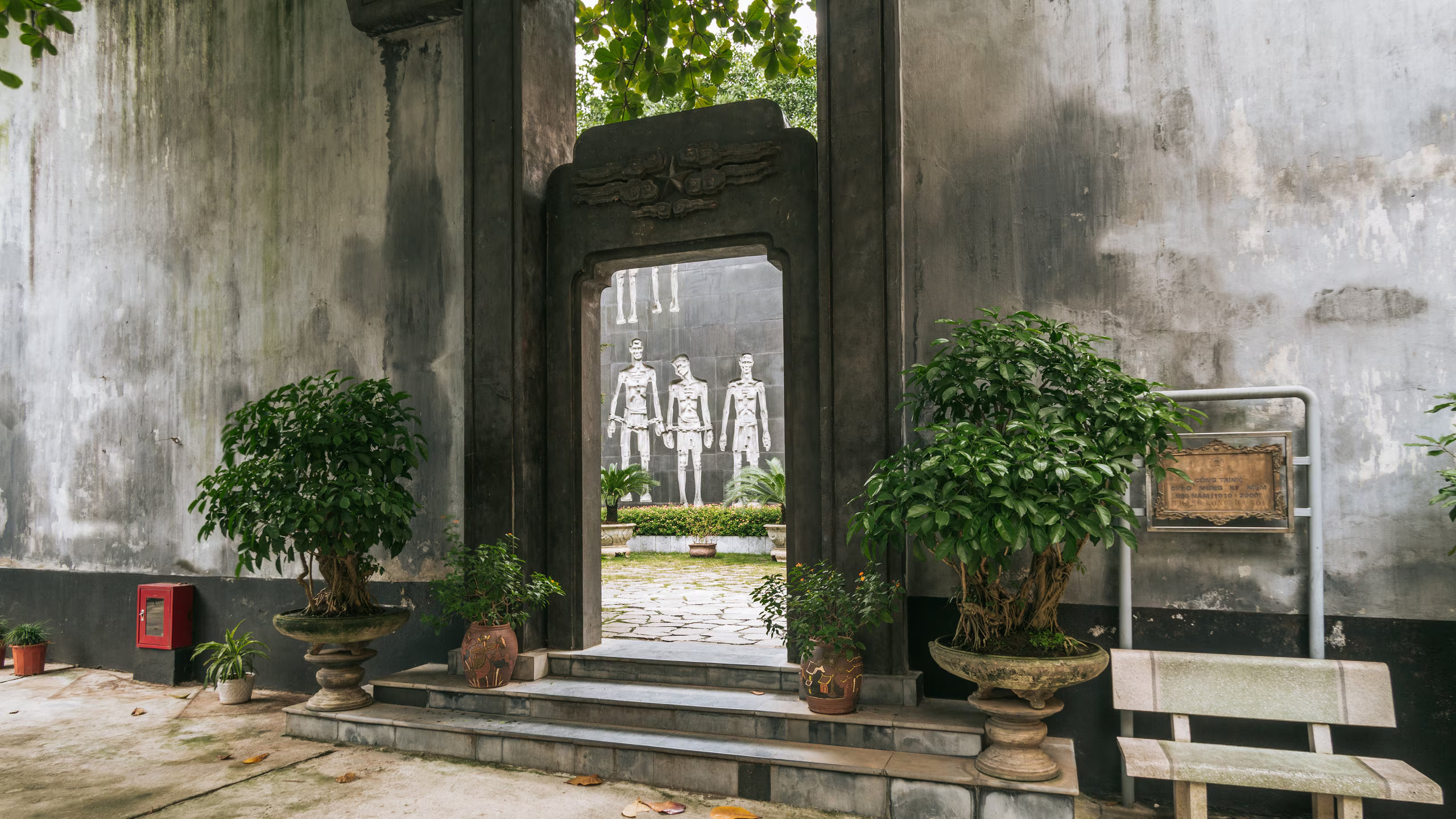
Guided tours are highly recommended. Led by experts deeply knowledgeable about the prison’s history, these tours offer visitors enhanced insights and a deeper contextual understanding of the complex narratives presented. English and Vietnamese guides are available, and to ensure preferred times and languages, booking ahead is advisable.
Visitor Recommendations:
- Allocate at least two hours for a thorough tour.
- Opt for guided tours for a deeper contextual understanding.
- Be respectful: the museum commemorates historical suffering.
Practicalities involve checking the opening hours which run from 8:00 AM to 5:00 PM daily and ensuring nuanced appreciation of the exhibits with reflections on both resistance and captivity narratives. Photography is often permitted, but be mindful of spaces where flash or recording might disturb the ambiance of reverence and learning.
Respect and consideration are paramount during the visit. Recognize the weighty history housed within the museum and maintain a respectful demeanor throughout. The space is rich in historical emotion, and engaging with it attentively underscores its narrative depth and visual resonance. By following these recommendations, visitors enrich their understanding while honoring the legacies remembered within the storied walls of Hoa Lo.
Accessibility and visitor guidelines
Hoa Lo Prison Museum’s commitment to accessibility and visitor guidelines ensures that each individual can fully engage with its narratives, regardless of physical abilities. The museum is consciously designed to be inclusive, making it easier for everyone to appreciate its expansive legacy and intricate storytelling.
Accessibility features are prominently integrated throughout the museum. Elevators and ramps are available for those requiring mobility assistance, ensuring ease of movement across various exhibits and levels. The layout itself is user-friendly, with structured pathways that accommodate wheelchairs and strollers, enabling families and individuals with mobility challenges to navigate the museum seamlessly.
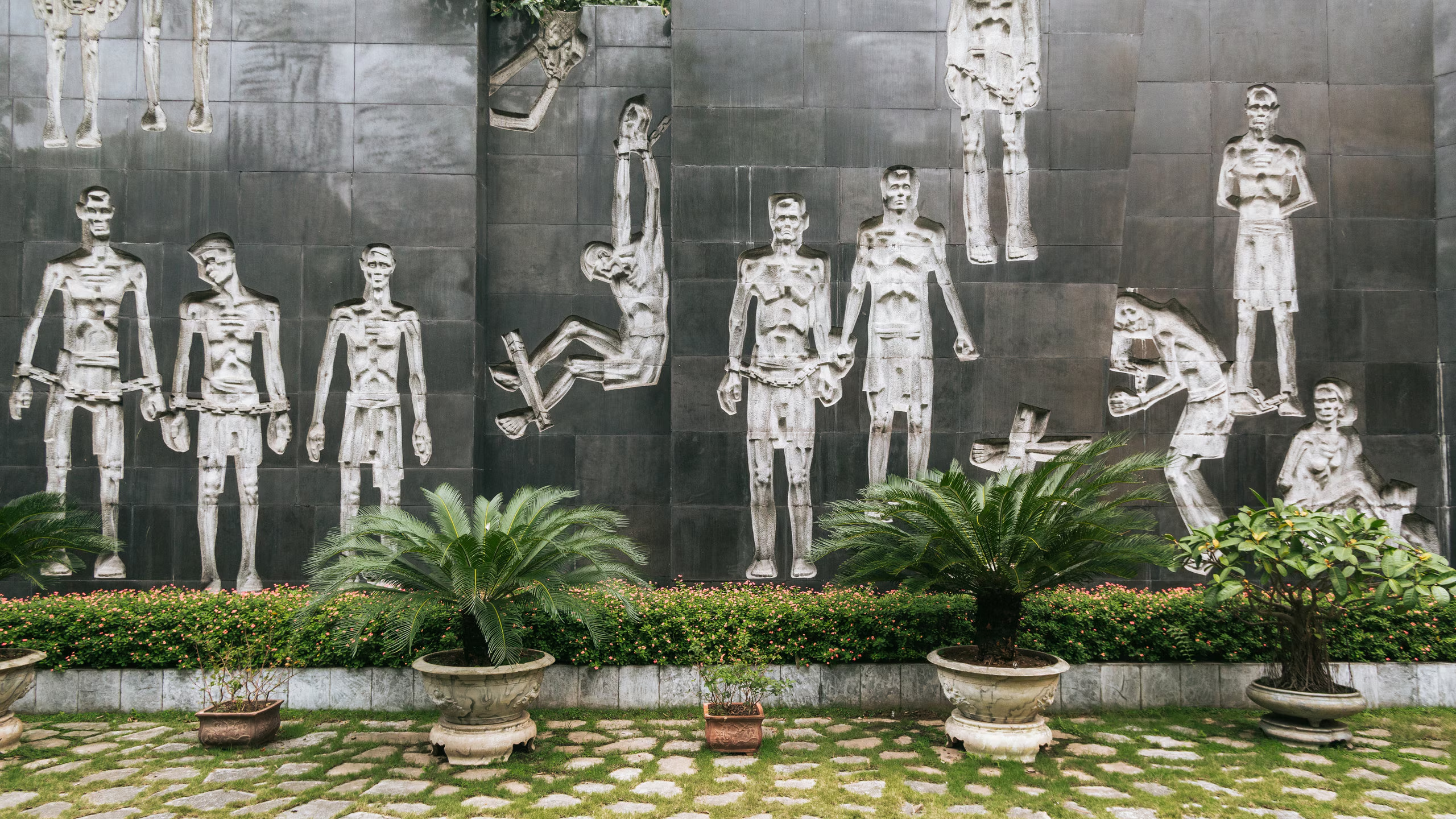
Additionally, Braille panels are present at key points of interest, offering visually impaired visitors tactile engagement with the narratives presented. This inclusivity is reflective of a broader commitment to equitable access, extending the museum’s educational reach and honoring the spirit of learning and reflection.
Visitor Guidelines:
- Respectful conduct is required throughout your visit.
- Adhere to photography restrictions where indicated.
- Utilize guided tours for comprehensive insights.
The museum’s operational hours extend from 8:00 AM to 5:00 PM, allowing visitors to plan visits that fit within their logistical parameters. This flexibility accommodates a variety of schedules and ensures that all guests have sufficient time to enjoy the comprehensive spectrum of exhibits. An entrance fee of approximately 30,000 VND (~$1.5 USD) is charged, with discounts available for students and seniors.
In understanding these guidelines, visitors ensure a respectful and fulfilling experience. The Hoa Lo Prison Museum, as a site of shared historical significance, benefits profoundly from engaged and responsible visitation. By providing clear accessibility options and comprehensive guidelines, the museum underscores its commitment to fostering understanding, reflection, and empathy among all who pass through its storied walls.
FAQs:
- What is the focus of the Hoa Lo Prison Museum?
- The museum primarily focuses on Vietnam’s struggle against colonial and wartime oppression, highlighting resilience and sacrifices endured by Vietnamese political prisoners and American POWs.
- Are guided tours available at the museum?
- Yes, guided tours are available in both English and Vietnamese. Booking in advance is recommended for larger groups to ensure availability.
- Is the Hoa Lo Prison Museum accessible for visitors with disabilities?
- Yes, the museum is wheelchair friendly, with accessible pathways and ramps ensuring all visitors can fully engage with the exhibits.
- What are the opening hours and entrance fee for the Hoa Lo Prison Museum?
- The museum is open daily from 8:00 AM to 5:00 PM. The entrance fee is approximately 30,000 VND (~$1.5 USD), with concessions for students and seniors.
- What key areas should visitors explore at the museum?
- Visitors should explore sections dedicated to French colonial rule, American POW experiences during the Vietnam War, and memorials celebrating Vietnamese resistance leaders.
Key Takeaways:
- Historical perspectives: The museum juxtaposes Vietnamese resilience against colonial rule with the POW experiences during the Vietnam War.
- Multifaceted narratives: Exhibits encapsulate struggles, endurance, and reconciliation, reflecting complex layers of history.
- Visitor inclusivity: The museum is accessible, offering an immersive, educational experience for all visitors.
- Cultural significance: Hoa Lo stands as a symbol of Vietnam’s enduring spirit and historical journey toward independence.
- Reflective engagement: Visitors are encouraged to reflect upon the narratives’ impact on national identity and collective memory.
Conclusion:
Hoa Lo Prison Museum serves as a conduit for understanding and reflection on Vietnam’s turbulent history. By showcasing narratives rooted in colonial repression and wartime endurance, it captures the nuanced interplay of resilience, struggle, and reconciliation that defined an era. Offering a balanced view of historical pain and triumph, the museum is more than a repository of artifacts; it is a space for dialogue and introspection. Visitors leave with a deeper appreciation of Vietnam’s complex journey an enduring spirit resilient in the face of adversity that continues to inspire and educate.


